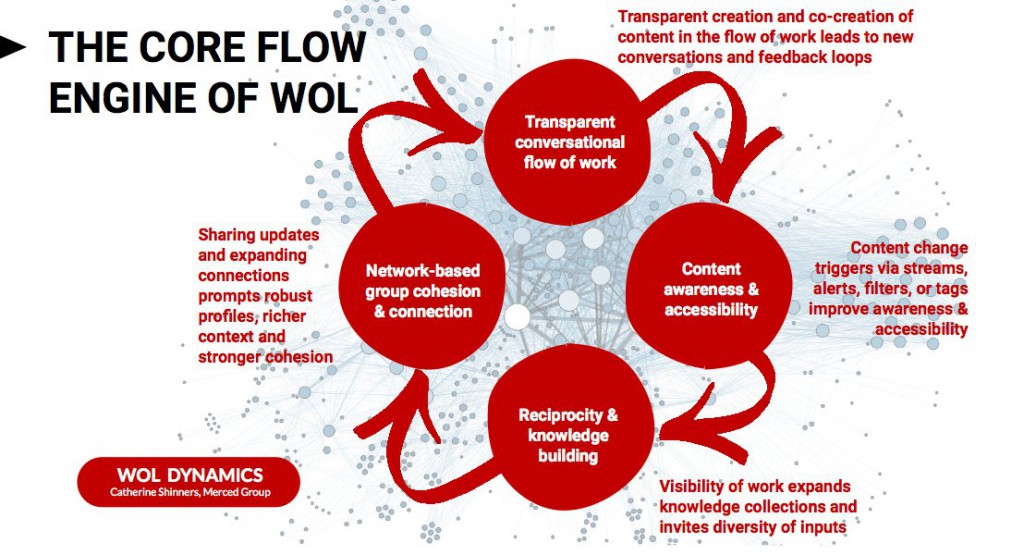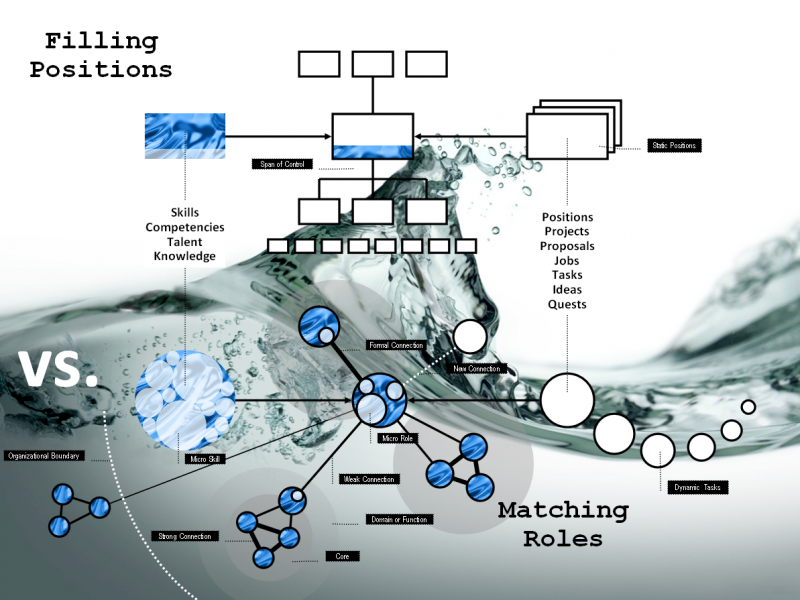Social collaboration – the dynamics of ‘working-out-loud’
Social collaboration – the dynamics of ‘working-out-loud’ http://mercedgroup.com/wp-content/uploads/2016/03/Mosaic.jpg 762 753 Catherine Shinners Catherine Shinners http://2.gravatar.com/avatar/20369aff7978a3842e7879d0699f8473?s=96&d=mm&r=gA significant benefit for users and organizations who employ social collaboration solutions such as enterprise social networking (ESN) is that it supports a more transparent, conversational way of working, enables more visible communication flows, and asynchronous yet interactive problem solving.
Organizations and workers struggle to address burgeoning workloads, to be able to create group cohesion and awareness for joint project work among globally dispersed teams, and often use static document production and email to collaborate on work and content production. Important comments or inputs are often buried in fractured email alleys and dead ends.
One of the major goals of more social ways of working is to enlist and open up the tacit know-how and experience that people possess. Workers have often been trained that they must do their work and bring back finished products to a group as ‘deliverables’. They can be concerned about being evaluated on generated their own completed work product before they expose the work to colleagues.
Bryce Williams, a colleague at Change Agents Worldwide came up with a brilliant shorthand description for this social modality, in 2010 – he called it ‘working out loud’. Social collaboration allows knowledge workers to ‘narrate’ their work and helps them provide co-workers and team members a better sense of the immediacy and context of activities.
There’s an important set of dynamics that is encompassed by ‘working out loud’ that also engenders a new set of behaviors and interactions. Here’s a view to the flow of these dynamics and key engagement activities and results

Transparent, conversational flow of work – social collaboration brings a more natural human, narrative flow to asynchronous group interactions around workflows and business processes and surfaces perspectives of people working together on projects or artifacts. The transparency and persistence of conversation threads in social collaboration tools let’s groups and team more visibly co-create content, and share and receive feedback, not just ‘in the moment’, but most importantly, in the current context of the flow of work. The structure of many social tools let’s groups more directly connect their content to a dialogue around the work with commenting, feedback mechanisms and tags.
Content awareness and accessibility – Social collaboration tools are designed keep people in the flow of work throughout a project. The experience in social collaboration creates an awareness of content changes and current conversational elements. People can get a view to this flow of dialogue and work by using activity streams, tags, or alerts to other mediums (i.e. email). This awareness lets people bring in immediate comments or insights, or references to important resources. They can see where content has moved along a work flow and avoid working on versions of artifacts that are outdated. Connecting content no longer means attaching a document in an email. New habits for working out loud include using the tools to create awareness – tagging, using affirmation signals (like button), creating and using filtering mechanisms in activity streams, linking other content into conversational flows. Developing awareness skills includes actively setting and modifying alerts and filter options.
Network-based group cohesion and connection – most social collaboration tools support ways for people to create rich and robust profiles. Organizational directories often simply features contact information, obscure job titles, and perhaps reporting structure. Rich profiles helps an individual create an awareness of their background, work projects, their social roles in the network (answers questions, subject-matter-expert). Bringing a deeper, richer set of information about an individuals experience and background can be used by teams to quickly orient to one another, as they move from project to project, gives everyone a greater context of the talents and expertise accessible to the team. The variety of interaction options also supports dynamic, open ways of connecting the insight and knowledge that people bring to the work process – sharing updates with microblogs, or comments, creating and contributing to discussion forums.
Knowledge building – as the work and conversations build and remains transparently persistent, access to group knowledge also builds. Important insights, viewpoints and problem-solving dialogue is not just retained, but can be viewed more relevantly in the context in which is was applied. The work flow process becomes a vital social learning process.
I’ve observed and facilitated these dynamics in companies I’ve helped and worked with over the last few years, and I’m using them every day in the with colleauges Change Agents Worldwide communty. I’ve seen individuals, groups and organization take up ‘working out loud’, to truly transformative effect with organizational agility, more relevance and empowerment in daily work experiences, and real business results.
- Posted In:
- Uncategorized



